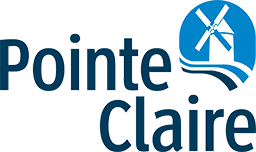| Environmental Columns
Reducing at the source for a zero-waste lifestyle
Better sorting for a better planet
The Québec Government has given the province’s cities the objective of recovering 70% of their recyclables by 2020. By 2019, the City of Pointe-Claire had already achieved a 78% recovery rate. This performance was thanks to citizens’ ongoing efforts to sort their waste.
Collecting recyclables helps to reduce the volume of waste sent to landfill. This said, to optimize management of these materials at the sorting centre, items placed in the blue bin should not be contaminated by other things that don’t belong there. Recyc-Québec provides two simple questions to determine whether an item can be recovered or not:
- Is it a container, package or printed material?
- Is it made of paper, cardboard, plastic (1 to 5 and 7), glass, aluminium or metal?
Containers, packaging and printed material are the only items that should be placed in the bin. Contamination by other items reduces the quality of the material as it leaves the sorting centres and is a hindrance to its resale. The recycling economy is based on the sale of these materials to give them a second life. Too much contamination can make it necessary to send them to landfills, which has both an economic and environmental impact.
The agglomeration of Montréal is responsible for the recyclables sorting centre and the resale of these materials, while Pointe-Claire residents are responsible for properly sorting their recyclables.
Sorting waste is positive and encouraged, but did you know that there are other steps you can take that are very effective in helping you improve your environmental impact?
The 4RV-E
Reducing and reusing to achieve zero waste
The 4R-D principle is a hierarchical process that supports proper waste management. It refers to the following actions: Reducing at the source, Reusing, Recovering and Recycling, Reclaiming and Disposing. These actions are to be performed in this order.
Reducing at the source
Reducing at the source, the first step in this process, is a very concrete solution to lower the risk of contaminating recyclables and having them sent to landfill. Reducing leads you to reflect on your real consumption needs and adopt a new, more environmentally friendly lifestyle. For example, planning meals and using a list for grocery shopping helps avoid impulse purchases, or, if the option is available, buying food in bulk reduces the amount of packaging to be managed at home. Also, renting an item avoids the need to purchase new goods for occasional use.
Reducing means making informed choices and rethinking your needs. By doing so, some purchases will be eliminated and others will be reduced to a smaller quantity, in turn reducing waste. Reducing at the source means less production and transportation of new products, which limits pollution, energy consumption and the depletion of natural resources.
Reusing
Reusing involves choosing items that can be used repeatedly, or buying or donating a used product. You can also repair an item yourself or have it repaired to extend its life. In fact, there are repair cafés where, depending on the specialists on hand, you can obtain tips and services to get appliances, electronics and other equipment back in working order.
Reusing gives a product a second life. This principle avoids the excessive use of natural resources and prevents or delays a product from being sent to landfill. In addition, repairing, sharing and donating used goods saves money and encourages mutual aid and generosity.
Reducing at the source and reusing are the first steps to take in the eco-friendly approach to waste management. These actions are the closest we can get to a zero-waste lifestyle that has environmental, economic and social benefits.
These two actions help reduce the pollution generated by manufacturing and transportation while providing savings and social benefits. Reducing waste is a solution to reducing the amount of material sent to landfill, because the best waste is no waste!
Recovering and recycling
Recovering and recycling are the steps in which recyclables are collected and sorted according to their components. The chosen materials will be processed and used to make other products. The City offers several types of collections to recover items or materials that are not accepted in the recycling bin; for example, electronic devices dropped off in the Electrobac or at the ecocentres are recovered for their metal alloys, which are then incorporated into new products. Refer to the collection guide for all the necessary information.
Reclaiming
Reclaiming includes several different processes that make use of the energy or composition of material. Organic matter, for example, is transformed into compost by microorganisms.
Disposing
Lastly, disposing is the ultimate step for a product that no longer has any reclamation alternative. The product will either go to landfill or be incinerated. Pointe-Claire’s household waste is sent to a landfill site. This is the option we are most interested in eliminating, an effort that Pointe-Claire citizens contribute to day after day through their choices and actions.
REFERENCES
- Bordeleau. S. (2020, January 27). Montréal maintiendra les opérations de recyclage même si Tiru se retire. ICI.Radio-Canada. Found at https://ici.radio-canada.ca/nouvelle/1493658/tiru-recyclage-collecte-operateurs
- Dansereau, É. (2016, October 24). Zéro déchet : bon pour l’environnement et pour la santé. Le Courrier du Sud. Found at https://www.lecourrierdusud.ca/zero-dechet-bon-pour-lenvironnement-et-pour-la-sante/
- Écotech Québec. (2016). Valorisation énergétique des matières résiduelles : chaîne de valeur de la filière québécoise (sommaire). Found at https://ecotechquebec.com/documents/files/Etudes_memoires/valo-energetique-ecotech-qc-2016.pdf
- Krol, A. (2020, January 25). Centre de tri de Saint-Michel et de Lachine : les matières n’iront pas à l’enfouissement. Lapresse. Found at https://www.lapresse.ca/actualites/environnement/202001/24/01-5258209-centres-de-tri-de-saint-michel-et-de-lachine-les-matieres-niront-pas-a-lenfouissement.php
- Pointe-Claire. (2018). Responsible Procurement Guide. Found at https://www.pointe-claire.ca/content/uploads/2018/12/Guide_Approvisionnement-Responsable_EN_Final.pdf
- Régie intermunicipale de traitement des matières résiduelles de la Gaspésie (RITMRG). (2017). 3RV. Found at http://ritmrg.ca/reduction-a-la-source/
- Trottier, C. (2015, September 15). Comment réussi votre boite à lunch zéro déchet. Found at https://www.tendanceradis.com/single-post/2015/09/15/lunch-zero-dechet
